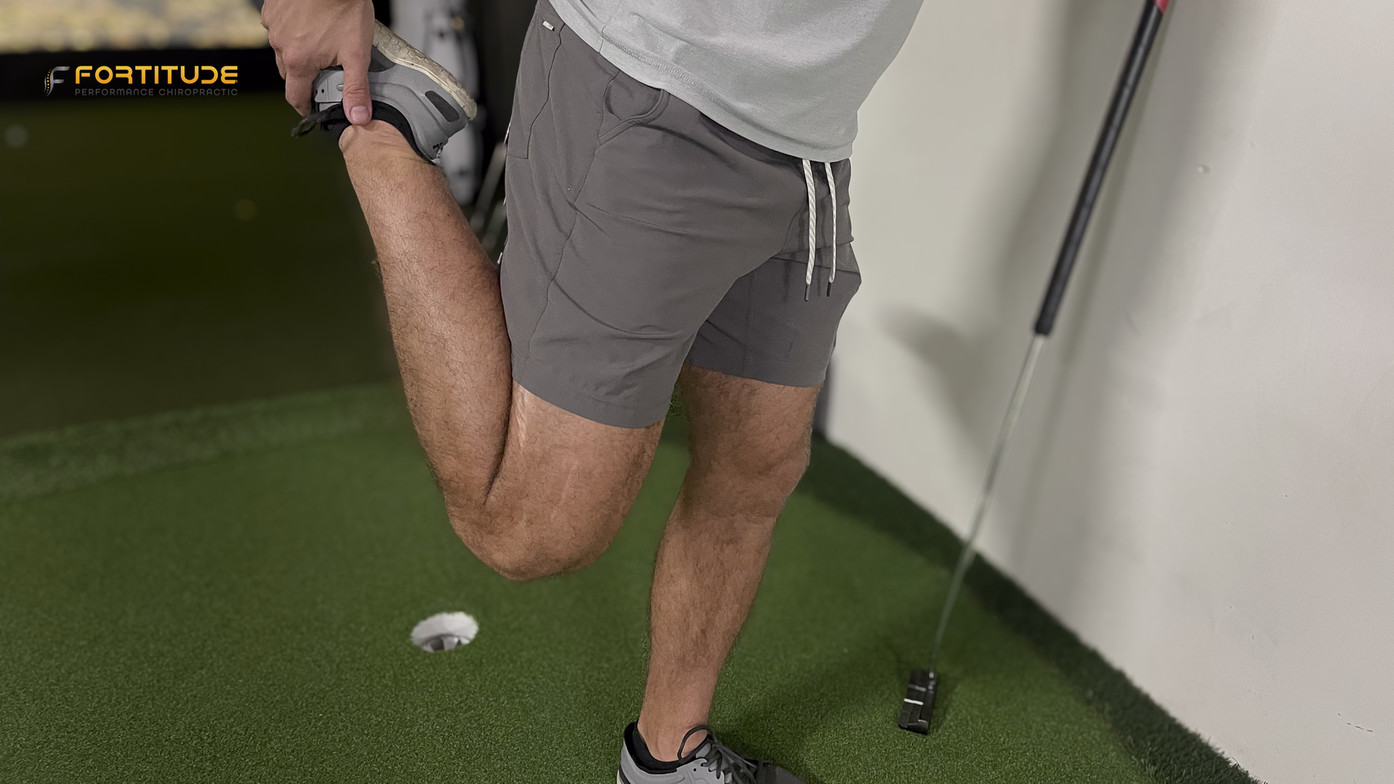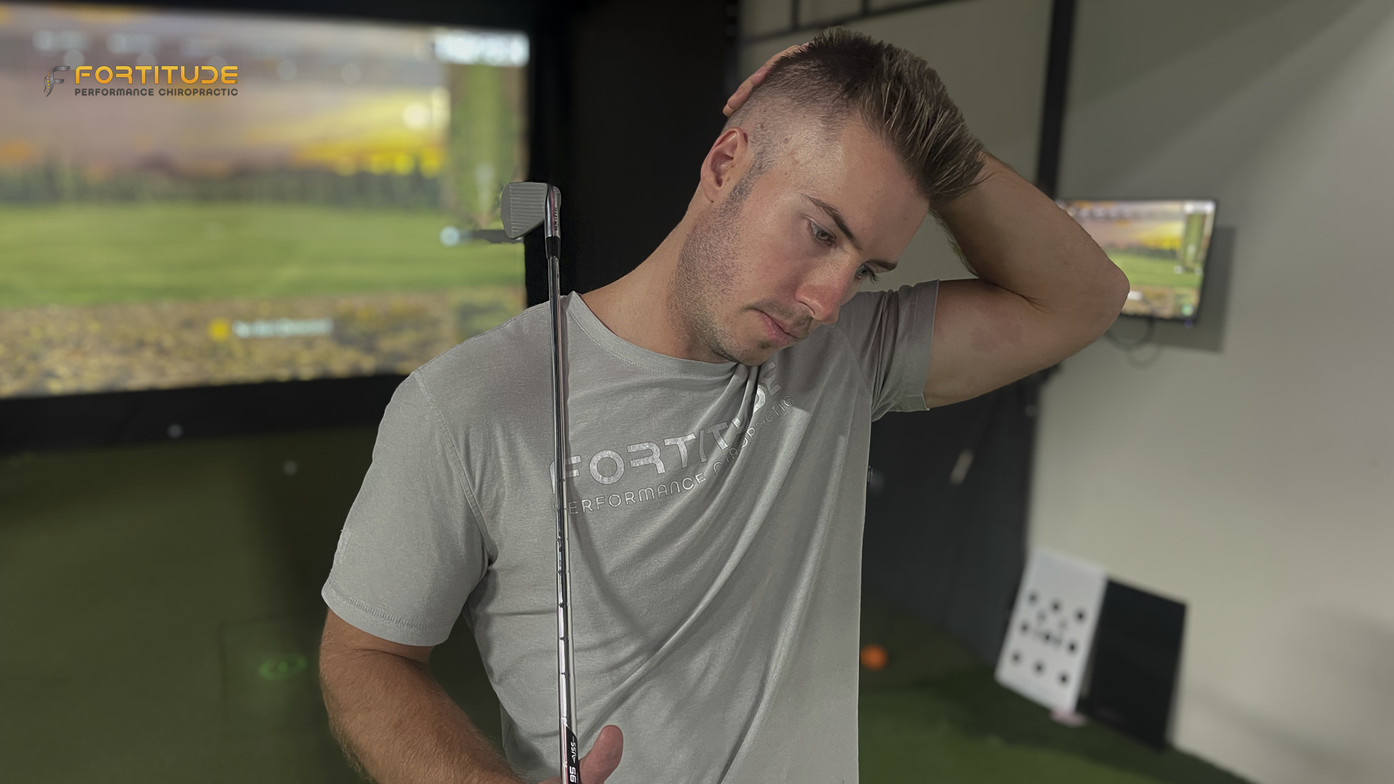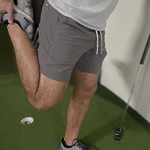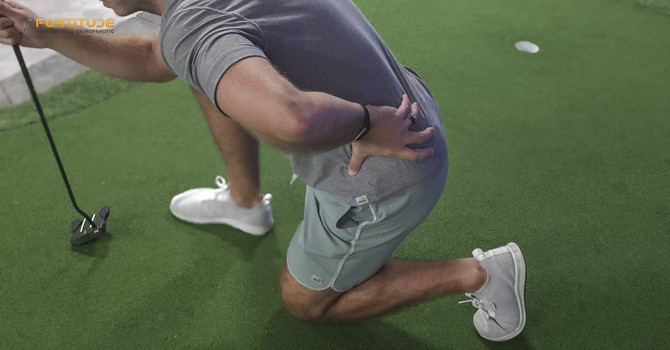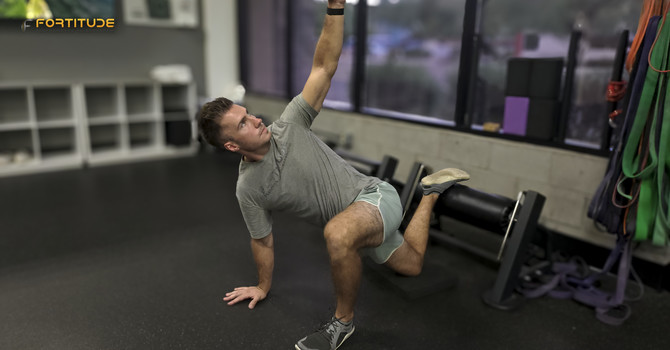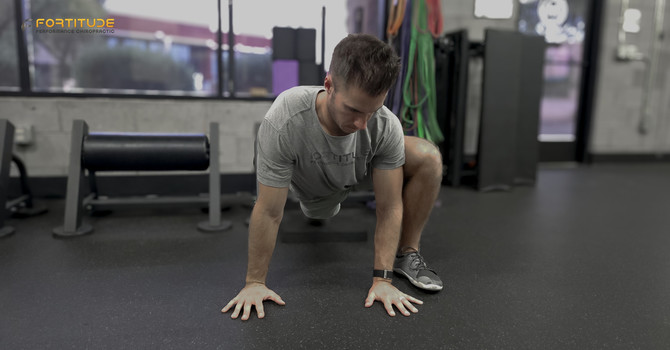Why Stretching Isn’t Solving Your Pain
(And What to Do Instead)
If you’ve been stretching every day but still feel stiff or achy, you’re not alone. Many people assume tight muscles just need more stretching, but if that were true, all that stretching would have fixed your problem by now. Instead, you might notice:
- Tight hamstrings every morning despite daily stretches
- A stiff neck or shoulders even after doing all your favorite stretches
- A lower back that never loosens up, no matter how much yoga or foam rolling you do
The truth is, the problem isn’t that you’re not stretching enough. It’s that your body is holding onto tightness for a reason. Until you figure out why it’s tight in the first place, simply pulling on those muscles won’t give you lasting relief. In fact, research shows that while stretching can boost flexibility, it has almost no impact on most chronic pain or injury prevention. It might even make things worse if the tightness is hiding an underlying weakness or instability.
The good news? Once you address the real cause behind that tight, achy feeling, you can finally get the relief you’ve been stretching for. In this post, we’ll cover:
- Why your muscles feel tight (and what your body is trying to tell you)
- Why stretching alone isn’t fixing the issue (and when it could aggravate things)
- What actually works to relieve pain and improve mobility for the long haul
- How we help patients here at our Scottsdale clinic move better without relying on constant stretching
- FAQs about stretching, tightness, and getting pain-free movement back
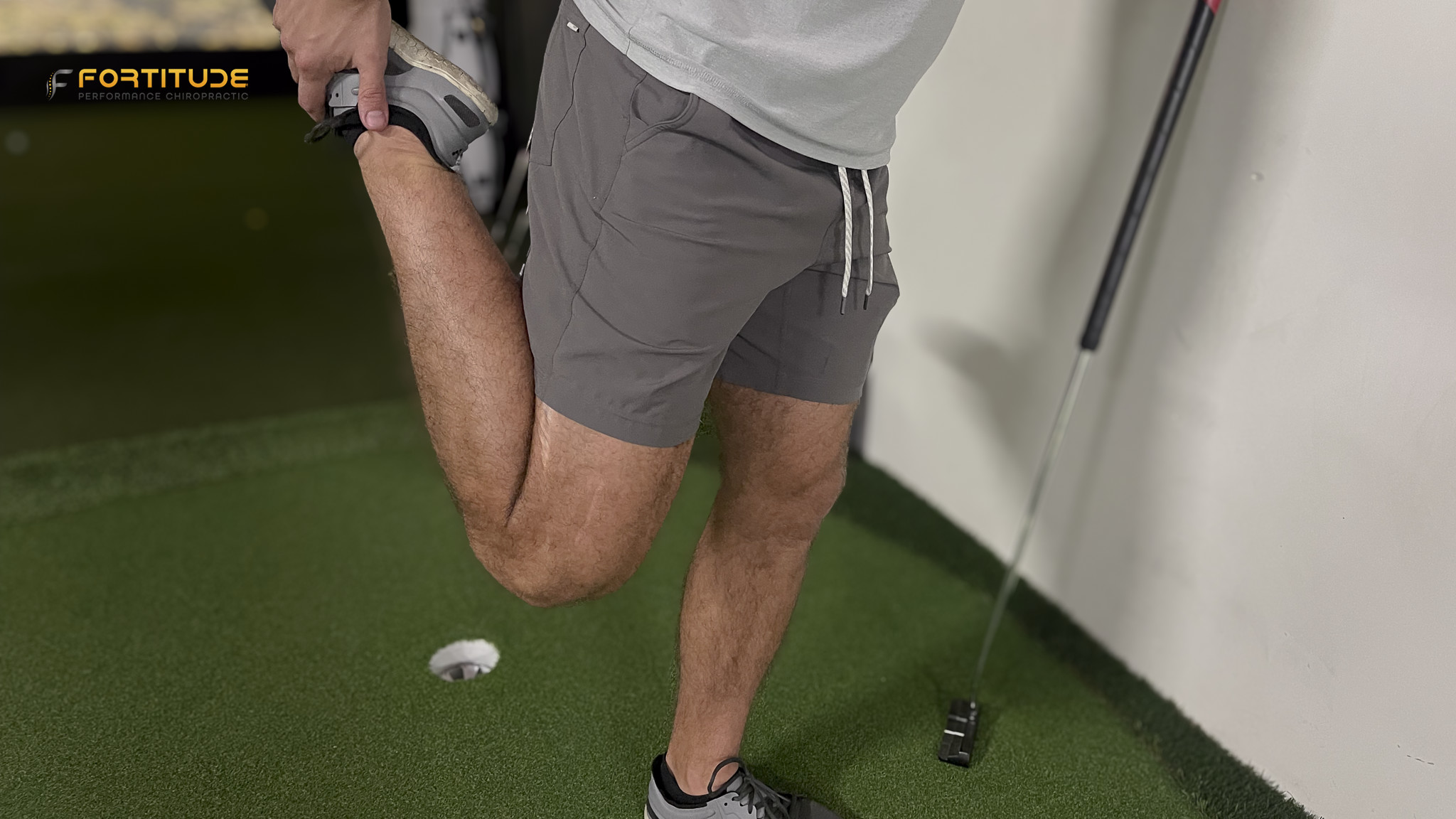
Why Do Your Muscles Always Feel Tight?
Tightness is usually a sign that something else is going on under the hood. Muscles don’t just tighten up for no reason, often, it’s your body’s way of protecting itself. Think of muscle tightness as your nervous system tapping the brakes.
Here are a few common reasons for that constant tight feeling:
- Protective Guarding: If your brain senses instability in a joint or weakness in an area, it may tell certain muscles to tighten up to create artificial support. For example, a weak core can trigger hamstrings to tighten in order to stabilize your pelvis. You experience it as “tight hamstrings,” but it’s really your body’s way of preventing injury in your back from the core not doing it’s job.
- Overuse and Fatigue: Muscles that are overworked (because other areas aren’t doing their job) can become chronically tight. A classic example is the upper trapezius in your shoulders getting stiff and sore when your mid-back is too stiff or your postural muscles are weak. The overworked muscle stays tight as it compensates for its neighbors and your posture.
- Joint Restrictions: Sometimes what we feel as muscle tightness is actually a joint that isn’t moving well. If a joint like your hip or upper back is stuck, the muscles around it might tense up because muscles attach to joints. No amount of stretching the muscle will improve the joint’s mobility, so the tight feeling keeps coming back. In this case we have to address BOTH the joint restriction and the tight muscles to fix the whole picture.
- Previous Injuries or Posture Habits: Old injuries or long-term posture issues can program certain muscles to stay tense. Your body learns a pattern (say, a limp or a slouch) and certain muscles remain in “on” mode all the time. Until you re-train that pattern, those muscles can feel tight and sore.
- Tightness as Protection: Imagine driving a car with bad brakes. You wouldn’t want to speed downhill, you’d naturally go slower. Your body works the same way. If it thinks a part of you (a “brake”) isn’t working right, it tightens muscles to slow you down or limit movement. It’s not because your body wants to be tight; it’s trying to keep you safe.
However, the part that most people don’t tell you is that by trying to keep you “safe” you are creating compensatory patterns elsewhere that often lead to injury down the line.
Why Stretching Isn’t Fixing the Problem
Stretching can definitely feel good in the moment, it increases blood flow and can temporarily ease tension. But if you’re relying on stretching alone to solve recurring pain or stiffness, you may have noticed it’s not a lasting solution. Here’s why stretching often falls short (and when it can backfire):
- It’s Treating the Symptom, Not the Root Cause: Stretching a tight muscle might give relief for an hour or two, but it doesn’t address why that muscle is tight. If your hip is tight because your core is weak, stretching the hip won’t magically strengthen your core. The tightness will return because the underlying issue is unresolved. Many people get caught in a loop: tightness -> stretch -> temporary relief -> tight again the next day. That’s a sign the root cause isn’t being addressed.
- Tightness vs. Shortness: There’s a difference between a muscle that is truly short and one that just feels tight. Often, muscles feel tight because they’re overstretched or weak. Yes, you read that right. A weak muscle can actually create a sensation of tightness. For example, if your glutes aren’t firing, your hamstrings might both feel tight and weak because they’re doing more than their fair share. Simply stretching them can actually weaken them further, exacerbating the problem.
- Protective Tightness Won’t Release with Force: If your nervous system has tightened up a muscle to protect a joint or compensate for instability, forceful stretching is like tugging against a seatbelt that’s locked, your body will resist. You might even trigger more tension. Stretching an already stressed system can increase the stress response, making the muscle tighten up again even more shortly after. It’s a temporary win at best.
- Overstretching Can Increase Injury Risk: It’s possible to stretch too much. Pushing a muscle beyond its limits can lead to strains, or loosen joints that actually need more stability. For instance, aggressively stretching a shoulder with an impingement or an inflamed tendon can irritate it further. Your flexibility might improve, but at the cost of joint stability (a recipe for more pain down the road).
- It Can Create a False Sense of Security: If you always “feel better” right after stretching, you might miss the fact that the problem keeps coming back. It’s easy to chalk up improvement to the stretching routine when in reality you’re just managing symptoms. Meanwhile, the true cause, maybe poor movement mechanics or muscle imbalances, isn’t being corrected, and the cycle continues.
“We worked with a patient who stretched his hamstrings every morning for months with no relief. During our assessment, we discovered his hamstrings weren’t the real issue at all.. they were tight because his core and glutes were so weak that the hamstrings were doing all the stabilization work. His body basically turned them into protective ropes. Once we helped him strengthen his core and glutes, his ‘tight’ hamstrings suddenly weren’t tight anymore. He was shocked that he could touch his toes without stretching constantly. His body just needed stability, not more stretching.” – Dr. Molly
When Stretching Might Make Things Worse
Stretching isn’t evil but there are times it can aggravate your condition. If you’re dealing with an acute injury (like a muscle tear), aggressive stretching can delay healing. If you have a pinched nerve or disc issue, some stretches might irritate the nerve more. And if a joint is hypermobile (too loose), stretching surrounding muscles can increase instability.
The key takeaway: Stretching is not a cure-all. It’s one tool, but without addressing strength, stability, and proper movement, it’s like pressing on a leaky pipe without fixing the burst underneath. You might slow the drip, but the water keeps coming.
What to Do Instead (Find the Root Cause)
If stretching isn’t solving your pain, it’s time to change the game plan. Here’s what will actually get you long-term relief and better movement:
Identify the Root Cause:
Start with a full-body assessment. This is where a good rehab sports chiropractor or physical therapist shines. We look for what’s not moving well or working properly. Is it a stiff joint near the tight area? A weak stabilizer causing overload elsewhere? Chronic calf tightness, for example, might actually stem from poor ankle mobility or weak hips. Once you pinpoint the root cause, you can target it directly instead of guessing. (At Fortitude Performance Chiropractic, we always assess the whole chain, not just the site of pain.)
Strengthen What’s Weak:
The fix for a tight muscle is often to strengthen the surrounding areas, or even that muscle itself. Strength builds balance. Eccentric exercises (where a muscle lengthens under tension) improve flexibility and stability better than stretching alone. If your hamstrings feel tight, strengthening your glutes, hamstrings, and core helps your body feel safe moving more freely. Stable muscles don’t need to stay tight.
Improve Joint Mobility:
Sometimes it’s not the muscle, but a stiff joint underneath. Mobilizations, adjustments, and targeted drills can unlock the joint and let surrounding muscles relax. Tight hip flexors from sitting all day? You’ll get better results from mobilizing the hip joint (with banded stretches or lunge drills) than static quad stretching alone.
Use Active Mobility Work:
Active stretches help retrain your nervous system to trust new ranges of motion. Rather than holding a stretch for a long time, try movements that take you in and out of a range or build strength at the end range. Things like slow squats, yoga flows, or leg swings build flexibility with control, helping your body feel more confident and relaxed.
Don’t Forget Posture and Movement Habits:
Your daily patterns matter. If your setup at work or how you move during sports is stressing one area repeatedly, we’ll coach you on better habits. It might be learning to brace your core during a lift or adjusting how you sit. It’s not flashy, but it works, and it lasts.
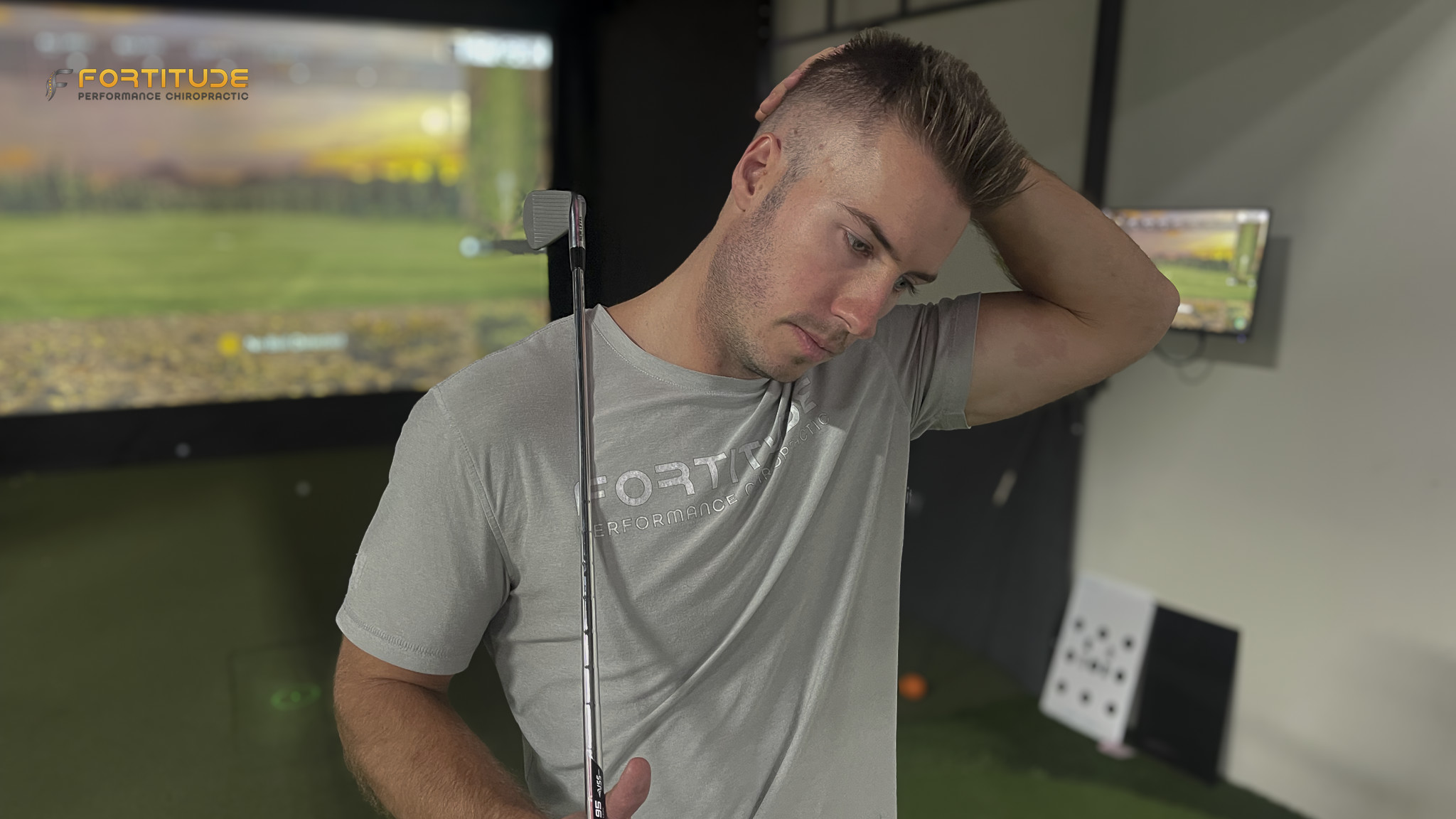
How a Sports Chiropractor Helps You Move Pain-Free
At Fortitude Performance Chiropractic, our approach to tightness and pain goes beyond the old “just stretch it out” advice. We combine hands-on therapy with movement analysis to get to the root cause of your issue. Here’s what you can expect:
Full-Body Movement Assessment:
We look at how everything moves together, not just one muscle or joint. If you come in with low back tightness, we’ll also check your hips, core, and ankles. Often, the problem shows up in one place but starts somewhere else. We use flexibility, strength, and movement tests to find the full picture.
Hands-On Manual Therapy:
If a joint is stuck or a muscle is locked up, we’ll use techniques to free it. That might include adjustments, soft tissue work, or dry needling. The goal is to restore normal motion where your body is restricted.
Targeted Rehab Exercises:
This is what helps results last. We give you specific exercises based on what your body actually needs. Whether it's glute activation for tight hip flexors or shoulder stability for a stiff neck, these exercises are personalized and coached so you’re building real change.
Active Care and Movement Coaching:
We help you keep doing what you love, just with better mechanics. For example, runners with calf tightness might adjust their stride while we work on ankle and hip mobility. Golfers with back pain get movement tweaks that reduce stress without cutting back on play. Done right, movement helps you heal.
Education and Prevention:
We help you understand why you got tight in the first place, so you can keep it from returning. That might mean correcting how you stand, sit, or sleep. A few small changes to your habits can go a long way toward staying pain-free.
“The best part is seeing the lightbulb go off for patients. They come in thinking they just need to stretch this or that, and after we work through a tailored plan, they say, ‘I can’t believe how much better I feel, and I’m not stretching all the time anymore!’ When you address the root cause of their tightness, whether it’s a stiff joint, a weak muscle, or a bad movement habit, the results speak for themselves. They finally feel in control of their body again.” – Dr. Max
Bottom line: We blend relief (so you feel better quickly) with rehab (so you stay better for the long haul). By the time we’re done, you won’t be tied to a stretching routine 24/7. You’ll move better, feel looser, and have confidence that your body can handle what you throw at it.
When to Seek Help (Instead of Stretching Through It)
Pain or tightness that lingers is your body’s way of waving a red flag. So how do you know when it’s time to get a professional evaluation? Here are some hints:
- Your pain or tightness has lasted more than 1-2 weeks: If you gave it rest and tried your usual stretches but it’s not improving (or getting worse), don’t keep pushing through the same routine. It’s time for a closer look.
- Stretching gives only brief relief (or none at all): If you stretch and feel better for a half hour, then the tightness creeps back, that means the real issue is unresolved. Or if certain stretches actually provoke pain or numbness, definitely stop and get it checked.
- You’re noticing other symptoms: Things like tingling, numbness, or weakness in addition to tightness are signs it’s not just a simple muscle shortness. For example, tightness with tingling down your leg could be nerve-related (like sciatica) rather than a true muscle issue. That needs proper assessment.
- Recurring “knots” or trigger points: Do you have the same knot in your shoulder or back that keeps returning no matter how many massages or lacrosse balls you attack it with? That usually means something in your movement or posture is continually causing that area to overload. We need to break the cycle by fixing the cause.
- Limited daily function: If your tightness is limiting your ability to do things you enjoy (like you can’t reach to put on a shirt comfortably, or you avoid certain exercises because of how tight you feel), don’t accept that as the new normal. There’s likely a fix for it once you find out what’s driving it.
Remember, pain is not a normal state of affairs, and neither is walking around feeling like the Tin Man every day. Sure, everyone has a stiff day here and there. But if it’s become a constant part of your life, it’s worth getting a professional to help you unravel why so that future injuries don’t take you out of daily life activities you enjoy.
In our experience, most people are amazed at how much better they can feel, and often say, “I wish I had done this sooner instead of spending months trying to stretch it out on my own.”
FAQ: Stretching, Tightness, and Lasting Relief
Q: Should I stop stretching completely?
A: Not at all. Stretching isn’t inherently bad. It can be great for warming up, relaxing, or maintaining general mobility. But it shouldn’t be your only strategy for fixing persistent pain. Keep it in your routine if it feels good. Just don’t rely on it to fix the root issue if the pain keeps coming back.
Q: How can I tell if a muscle is tight because it’s weak or actually short?
A: If light movement or strengthening makes it feel better, weakness is likely a factor. If it always tightens up shortly after stretching, it may be compensating for something else. True shortness tends to respond better to consistent stretching over time. We test both flexibility and strength to figure it out and tailor the plan accordingly.
Q: Why does stretching feel good if it’s not fixing the problem?
A: It boosts circulation and reduces tension temporarily. Think of it like scratching an itch. The relief is real, but short-term. To stop the cycle, you’ve got to dig deeper and fix what’s causing the tension in the first place.
Q: Can stretching ever make pain worse?
A: Yes. Stretching an irritated tendon or unstable joint can actually increase pain. If your body tightened a muscle to protect something, forcing it open can make things worse. Rule of thumb: if it causes sharp pain, stop and get checked.
Q: What’s better for tight muscles than static stretching?
A: Eccentric strength work, mobility drills, and low-impact movement like walking or cycling are often more effective. These build resilience and flexibility at the same time. And the results last longer.
Q: Can a chiropractor or physical therapist really help my tightness if stretching can’t?
A: Definitely. We figure out why you're tight in the first place. With manual techniques, rehab exercises, and movement coaching, we correct the actual problem instead of just managing symptoms. That’s what leads to lasting relief.
Q: How long will it take to feel looser and pain-free?
A: Some people feel better after a session or two. Others need a few weeks of consistent work. If it’s been going on for a while, expect a few weeks to see major change, but you should start noticing small improvements early on. What we will say though is that once the tightness starts to go away, that’s when the real work starts and we get to start building resiliency and longevity.
Feeling stuck in a stretch-repeat cycle can be really frustrating. The big takeaway is that persistent tightness or pain is not something you simply have to “live with” or stretch away indefinitely. By looking a little deeper at what’s causing it, and taking a smarter approach (with strength, stability, and good movement), you can truly fix the issue and reclaim freedom in your body.
If you’re in Scottsdale and tired of stretching without results, reach out to us at Fortitude Performance Chiropractic. We’d love to help you figure out what’s really going on and get you on a plan to feeling better. And if you’re not local, use this information as a guide to seek out a provider who looks beyond the surface. Remember, your body tightens up for a reason find that reason, address it, and you’ll be amazed at how much better you move and feel. Here’s to moving smarter, and finally getting rid of that nagging pain for good!

Fortitude Performance Chiropractic
Contact Me
